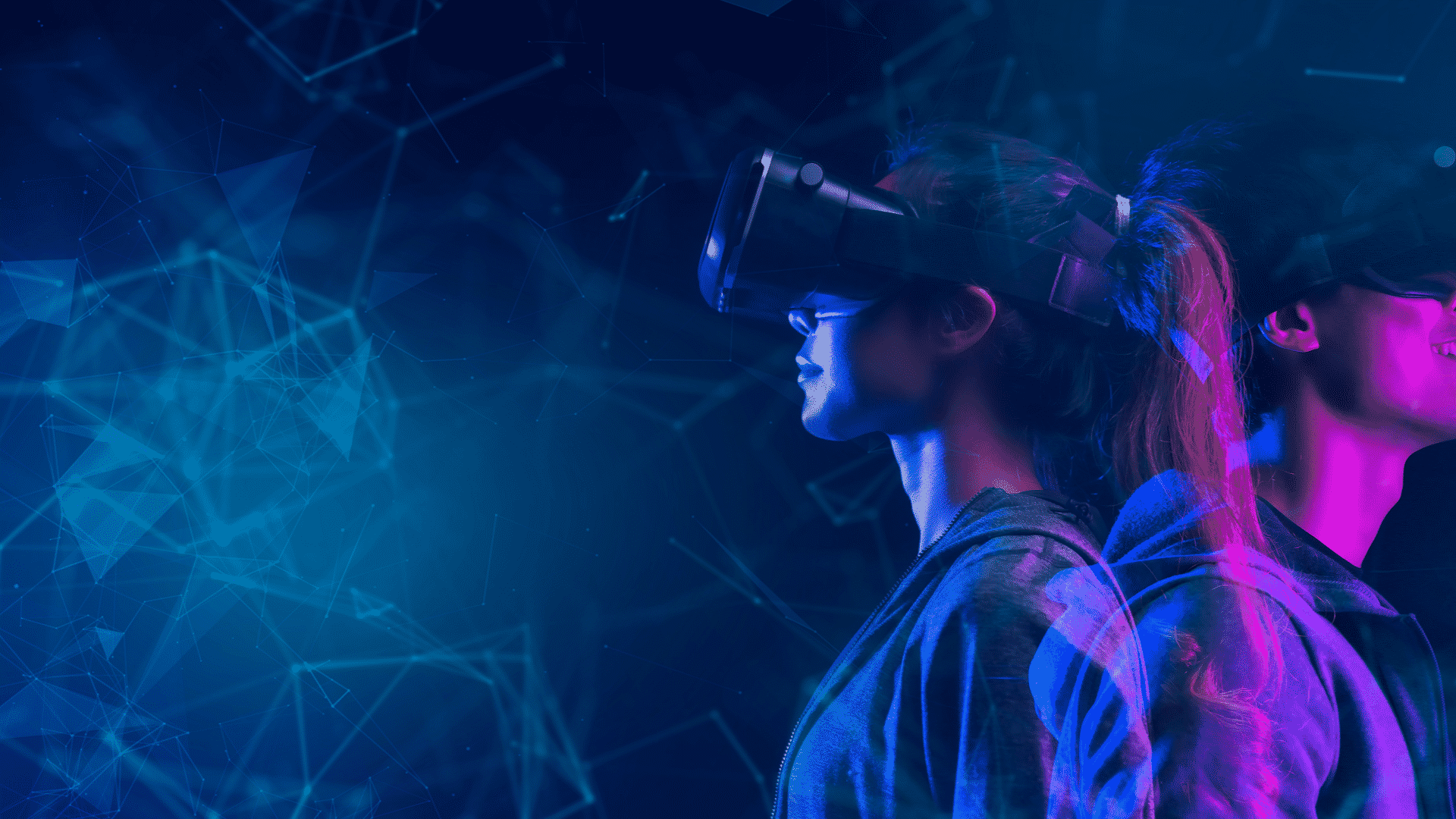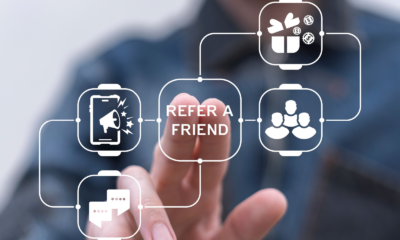Immersive media and technologies like augmented reality (AR), virtual reality (VR) and the Metaverse are a hot, hot topic these days. Long gone are the days when marketers could dismiss these technologies as a fad or as applications not ready for the mass market. With many technology heavy-hitters like Meta (Facebook) and Apple racing to be the first to offer a truly seamless immersive experience, there appears to be little doubt that we will get this technology into the hands of the mainstream.
According to Statista.com, there are already 1 billion active AR users worldwide, and the number will almost double by 2024. As marketers continue to break through the noise facing consumers 24/7, understanding and embracing new immersive technologies can be an effective way to engage and delight audiences.
Everyone responsible for communicating with and engaging audiences needs a baseline understanding of these new tools. From the CMO to the marketing manager to the content creator, the first step is to know the difference between AR, VR, XR (extended reality), and the communications capabilities provided by each flavor of this new immersive media.
Online training options for marketers
Most of the training provided today is focused on developing immersive content and is not relevant for marketers and strategists looking to leverage this technology for their campaigns. However, this is shifting as more brand marketing teams embrace immersive tactics. I have scoured the internet and curated my top picks for marketing-focused immersive technology courses to provide a baseline understanding of the technology. This list is by no means comprehensive but a great place to start your knowledge of these new forms of communication.
AWE Academy Web AR Workshop: Learn how to produce successful marketing campaigns
- Cost: $99.
- Time Required: 6 hours split into two live sessions over two days.
- Topics Covered: Accessible or web-based AR, platform overview, business goals, channel strategy, campaign mechanics and real-world use cases.
Built-in partnership with Augmented World Expo, this web AR workshop focuses on practical tools to help marketers build effective AR campaigns. The course materials were designed and presented by Patrick Johnson, CEO and founder of the global AR agency, Rock Paper Reality. The benefits of this type of live, synchronous, online course are that each session will have the most up-to-date information. The experts tapped to share their knowledge are available in real-time to answer questions and cater the content to those attending.
According to Johnson, many marketers see astounding results when effectively employing web-based AR, “In some instances, marketers are seeing AR outperform the benchmark by 95x, a 70% increase in brand retention, and a 4x increase in online purchases. AR is now a tool, not a toy. It drives real value for marketers, advertisers, and their customers.”
Johnson recommends this course for brands and product managers, marketers, advertisers, technology enthusiasts, and anyone who wants to learn web-based augmented reality for marketing advertising and tell stories more compellingly.

Creative Communication Beyond VR and AR on Futurelearn.com
- Cost: 7-day free trial, $39 monthly.
- Time Required: Self-paced, 12 hours.
- Topics Covered: XR, AR, VR, the Metaverse, key strategic principles, designing for the Metaverse, planning, and delivering strategic communications leveraging emerging technologies.
Designed by Derek Yates and Matt Wade out of Ravensbourne University in London, this self-paced, online course caters explicitly to marketing and communications professionals. The course is split into three sections that cover 1) XR Now – the current uses of immersive within marketing and communications 2) XR and MB Lab – moving from concept to creation and 3) XR and the Metaverse.
This specific course on XR technology is part of a four-part ‘expert track’ called Creative Strategy for Emerging Digital Media that also includes additional recommended courses on brand strategy, designing for social media and creative strategies for influencer marketing. The series is quite cost-effective as you can access the entire track for just $39 bucks per month.
“Essentially, if you create content or commission content that needs to engage in the landscape of digital communication, this course will enhance your ability to do this successfully,” says Yates. “We offer inside information from some of the best people in the business that will help you establish the right mindset to plan & deliver communication that utilizes emerging platforms with coherence and purpose.” Yates also shared a link to the video interviews he features in the training; these can be found on Vimeo.
Read next: Marketers – The Metaverse is coming

LinkedIn Learning: Augmented Reality Marketing with Cathy Hackl
- Cost: $29.99 monthly subscription to LinkedIn Learning.
- Time Required: Less than 1 hour.
- Topics Covered: AR overview, planning AR campaign, designing AR campaign, identifying and defining metrics.
This short introductory course is a perfect place to learn about AR marketing. Author of “The Augmented Workforce” and “Marketing New Realities,” Cathy Hackl walks the viewer through the steps of planning an AR campaign and provides the framework to move from concept to execution. Upon finishing this course, you will get a certificate of completion and a downloadable folder with helpful worksheets.
“Even though AR has been around for quite some time now, it can still be viewed as relatively new for marketing tactics,” explains Hackl. “This course was designed to be a high-level course for marketing executives worldwide to get their head around AR, understanding the technology and the benefits they can get from it.”
Get the daily newsletter digital marketers rely on.
Additional immersive marketing resources
Apart from these online courses, there are many other great resources where marketers can get up to speed on immersive technology. Live or virtual events are a great opportunity to learn from experts in the industry and network with other pioneering marketers looking to leverage this technology. Just search for “immersive marketing events” to get some suggestions. My favorites include Augmented World Expo, Advertising Week, Mobile World Congress, and SXSW, to name a few.
There are also online publications and groups like AR Insider, VRAR Association, and even mainstream outlets like Adweek and Martech.org that house articles, talks, research and opportunities to connect with experts in this field. Cathy Hackl hosts a podcast in partnership with Adweek called The Metaverse Marketing Podcast that would be worth checking out.
Masters in immersive marketing?
And for a much deeper dive, there are several certification and degree programs targeted at communications and marketing professionals looking to up their game in this arena. Along with many other tech-savvy marketing professors, I am hurriedly crafting new courses at universities across the country that focus on immersive technology and communications. Many of these programs will be offered remotely with online and hybrid options. Feel free to hit me up with any questions on these programs by connecting on LinkedIn.
I’m sure it comes as no surprise that I’m a HUGE fan of leveraging immersive technologies for communications. Since my first foray with Second Life’s 3D virtual world – YES, I was an SL power user in 2009! – I understood the immense power these tools have to create communities and engage online audiences. I’ve been championing these digital channels ever since and am so excited that its time has finally come. Now get smart on the technology, if you aren’t already and remember with immersive, we’re only limited by our imagination!
Opinions expressed in this article are those of the guest author and not necessarily MarTech. Staff authors are listed here.











![Holistic Marketing Strategies That Drive Revenue [SaaS Case Study] Holistic Marketing Strategies That Drive Revenue [SaaS Case Study]](https://articles.entireweb.com/wp-content/uploads/2024/09/Holistic-Marketing-Strategies-That-Drive-Revenue-SaaS-Case-Study-400x240.png)
![Holistic Marketing Strategies That Drive Revenue [SaaS Case Study] Holistic Marketing Strategies That Drive Revenue [SaaS Case Study]](https://articles.entireweb.com/wp-content/uploads/2024/09/Holistic-Marketing-Strategies-That-Drive-Revenue-SaaS-Case-Study-80x80.png)


You must be logged in to post a comment Login